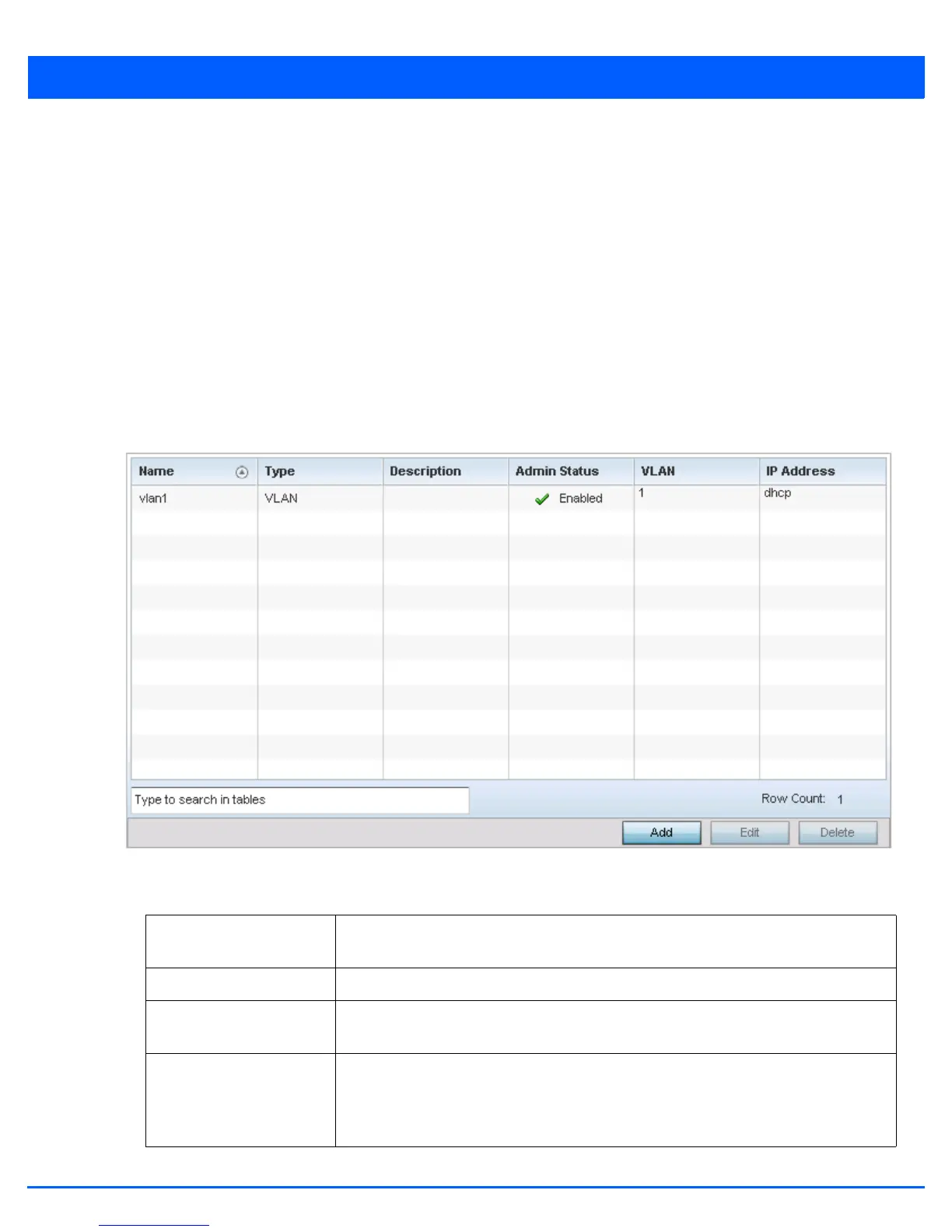Device Configuration 5 - 31
5.2.5.2 Virtual Interface Configuration
Profile Interface Configuration
A Virtual Interface is required for layer 3 (IP) access to provide layer 3 service on a VLAN. The Virtual Interface defines which
IP address is associated with each VLAN ID the access point is connected to. A Virtual Interface is created for the default VLAN
(VLAN 1) to enable remote administration. A Virtual Interface is also used to map VLANs to IP address ranges. This mapping
determines the destination networks for routing.
To review existing Virtual Interface configurations and either create a new Virtual Interface configuration, modify an existing
configuration or delete an existing configuration:
1. Select the Configuration tab from the Web UI.
2. Select Devices.
3. Select System Profile from the options on left-hand side of the UI.
4. Expand the Interface menu and select Virtual Interfaces.
Figure 5-17 Profile Interfaces - Virtual Interfaces screen
5. Review the following parameters unique to each virtual interface configuration:
Name Displays the name of each listed Virtual Interface assigned when it was created. The
name is from 1 - 4094, and cannot be modified as part of a Virtual Interface edit.
Type Displays the type of Virtual Interface for each listed access point interface.
Description Displays the description defined for the Virtual Interface when it was either initially
created or edited.
Admin Status A green check mark defines the listed Virtual Interface configuration as active and
enabled with its supported profile. A red “X” defines the Virtual Interface as currently
disabled. The interface status can be modified when a new Virtual Interface is created or
an existing one modified.

